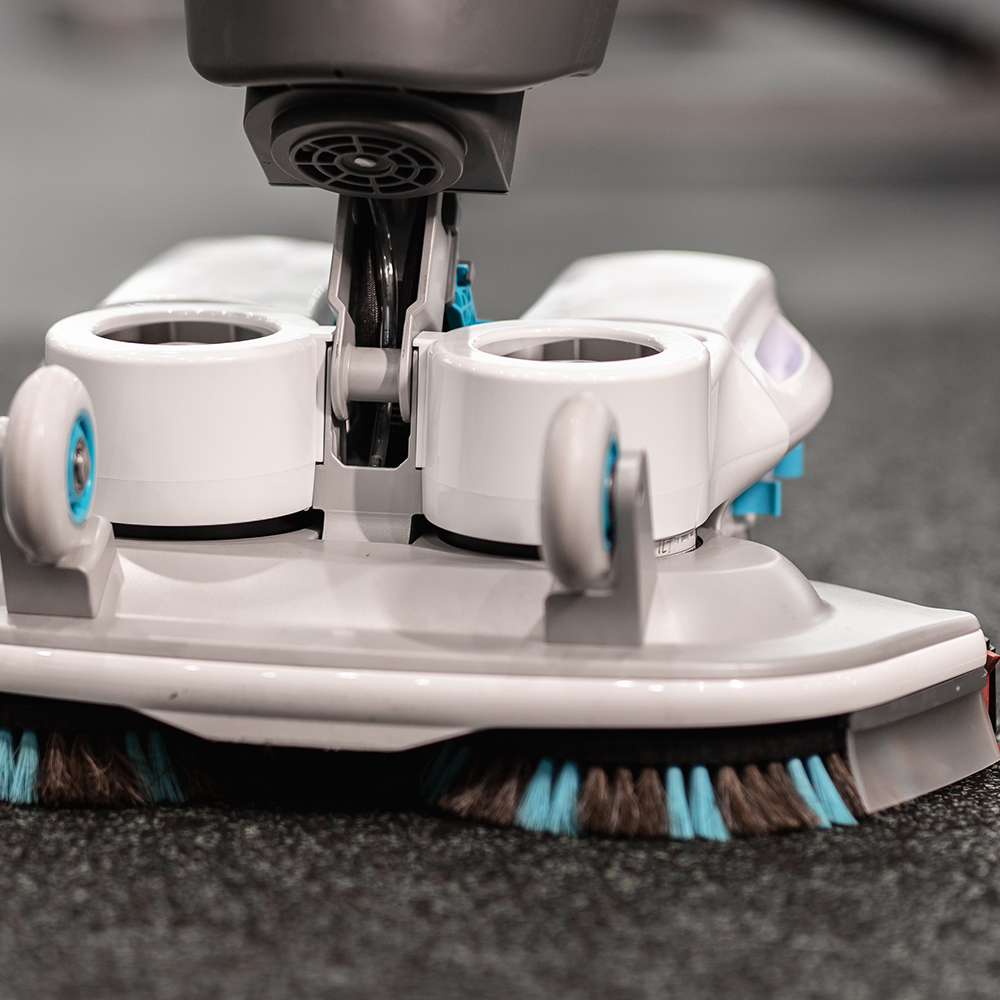
Here are some of the most common issues you may be having with your floor scrubber and how to avoid or fix them.
Problem 1. Your floor scrubber is not picking up water effectively
Solution and prevention methods
Check the hoses and filters for blockages first. If you’ve checked for blockages and the problem persists, it’s time to check the squeegee rubber for any signs of damage and that you are using the correct one for the floor type.
Problem 2. Poor cleaning results
Solution and prevention methods
This issue is typically caused by the floor scrubber having worn, or the wrong type of brush or pad, or the operator using the wrong type of chemical.
First check the brushes and pads that you’re using for any signs of wear and ensure that you’re using the right type of brush or pad for the surface that you’re cleaning. Finally, check that you’re using the right amount of chemical dosing in your floor scrubber.
Problem 3. The floor scrubber is not releasing water
Solution and prevention methods
Check the solution filter for any signs of debris that can cause blockages. If the problem persists, inspect the floor scrubber’s solenoid, which can become blocked by debris. If you find any debris in the filter or solenoid, simply remove it and rinse with clean water.
Problem 4. Poor runtime
Solution and prevention methods
A common fix here is to secure any loose battery and terminal connections that might have come loose over extended use. Next, make sure that you’re not running the floor scrubber with an excessive amount of pad pressure.
This can become a problem particularly on rough surfaces, which increase the load on the motors, and can have a huge impact on run-time.
The most common cause of runtime issues, though, are the batteries, which can degrade over time especially if you’re using a lead/acid or gel battery pack.
What most people don’t know is that lead/acid and gel batteries should not be discharged more than 50 per cent, because if they’re pushed too far, the lifespan can drop dramatically.
Best practices for taking care of a battery pack are simple: make sure you’re charging them after each use, and make sure you’re regularly checking the water levels of a wet cell battery.
Problem 5: The floor scrubber won’t turn on
Solution and prevention methods
First, check the battery terminal to eliminate any loose connections, and don’t have any signs of damage. Next, check the fuses. Simply reset the fuse, and the floor scrubber should power on.
Finally, if the problem persists, check the state of the batteries. Sometimes, a battery left in storage for a long time can enter a deep sleep state and will need to be charged again to wake them up.
Get in touch
Watch the full video, Top 5 floor scrubber problems & how to avoid them here:
https://www.youtube.com/watch?v=UfrJz7TKaN0 or read our full article here: https://i-teamanz.com/media-and-insights/insights/top-5-floor-scrubber-problems-and-how-to-avoid-them